#rising of 1745
Explore tagged Tumblr posts
Text
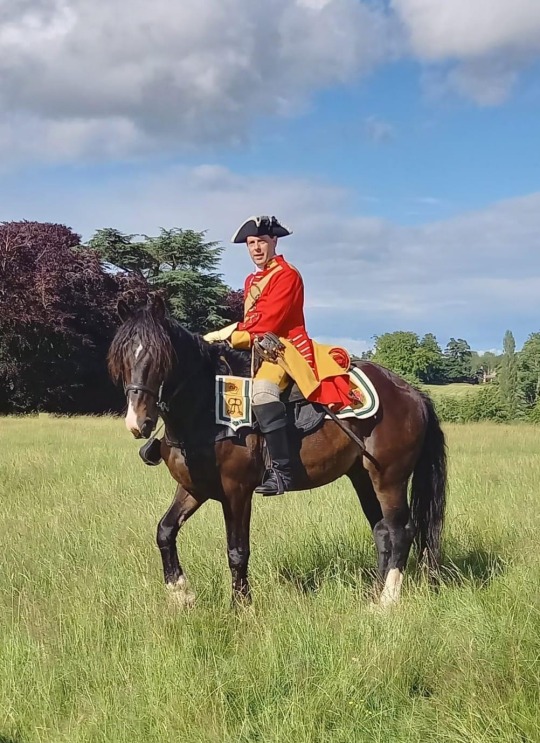
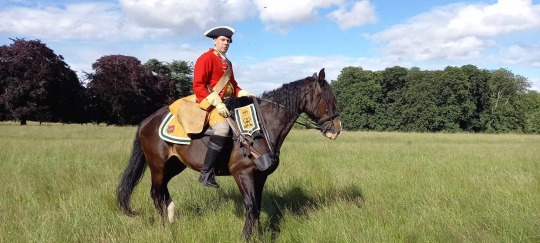

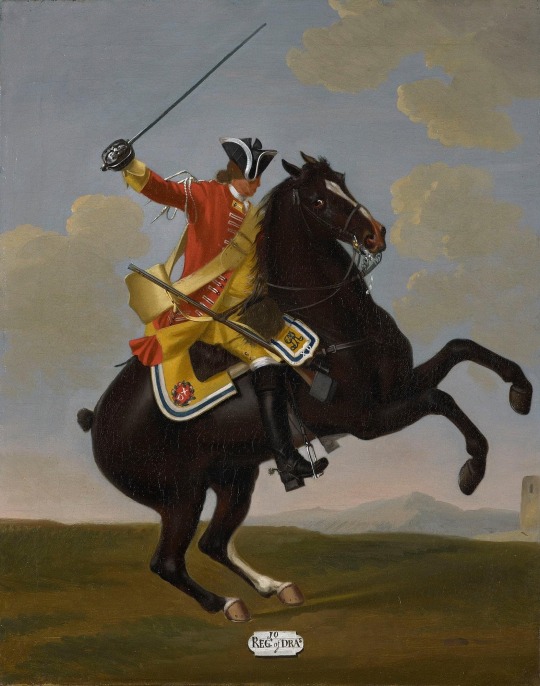
A recreated trooper of Cobham’s Dragoons as he would have looked during the 1745 Jacobite Rising.
#history#british army#military history#18th century#redcoat#dragoon#dragoons#the 45#1745#Jacobite#Jacobites#Jacobite rising
119 notes
·
View notes
Text

[Please click on the image to see it at a reasonable size.]
Algy fluttered over the deep chasm to the highest point on the headland, just a few metres away, and gazed in awe at the panorama around him, which was so extensive that he could only see a small part of it at a time.
But a very special view lay to the north-east, for looking out in this direction Algy could not only see a wide expanse of the Sea of the Hebrides but some decisive moments in Scottish history.
Algy wondered which birds might have perched in this very spot in the years 1745 and 1746, for what they would have seen changed Scotland for centuries to come, right up until the present day. Did they see that wee boat, over there in the distance, which brought Bonnie Prince Charlie and his followers on the final stage of their journey to Scotland from France in the summer of 1745? Algy could see a boat over there now, but he thought that it was probably not the same one…
Did his fluffy ancestral cousins fly that short distance over the water to watch the young prince make his way up to Glenfinnan at the head of Loch Shiel to rally the clans (a spot now famous for a much less significant reason)? It was a route well known to Algy…

And did they, a year later, see the prince and his men, fleeing from the battlefield of Culloden and the English army, set out again from Loch nan Uamh, just over there where the mainland meets the sea? And not once, but twice: first to escape pursuit in the outer islands, and then finally, in the early hours of September 20, 1746, to sail away to France, never to return…?
And did those birds add their cries to the laments of the folk left behind to face the wrath and terror of Cumberland's army? What stories those birds could tell if only Algy could meet them now…
Here is one of those laments, which remains ever popular, performed by some young Canadian musicians including a singer with a beautiful voice.❣️ The landscape is all wrong, but the song is all right ☺️
youtube
[Will ye no come back again was written by the late 18th/early 19th Scottish songwriter Carolina Oliphant, Lady Nairne.]
#Algy#photographers on tumblr#writers on tumblr#Scotland#Scottish landscape#Scottish panorama#Scottish history#will ye no come back again#carolina lady nairne#jacobite rebellion#scottish independence#bonnie prince charlie#loch nan uamh#sea of the hebrides#1745#1746#Maria Jimenez#Gabrielle and Noël Campbell#jacobites#jacobite rising#the 45#isle of eigg#isle of rum#adventures of algy#original content#jenny chapman
42 notes
·
View notes
Text
51 notes
·
View notes
Text
considering making a most obnoxious crossover
#listen it can work. black sails ends 1715? 16?#then we have treasure island around 1735#which is also the year (or close to it) that david balfour was born#meaning jim hawkins as a grown man could be present for events of 1745#moreover. stowe is in buckinghamshire but there's no telling where keith windham's father was from so.#what I'm saying here is that I'm involving flint's ghost in the jacobite rising through jim working in the british army. cringe but free
7 notes
·
View notes
Text
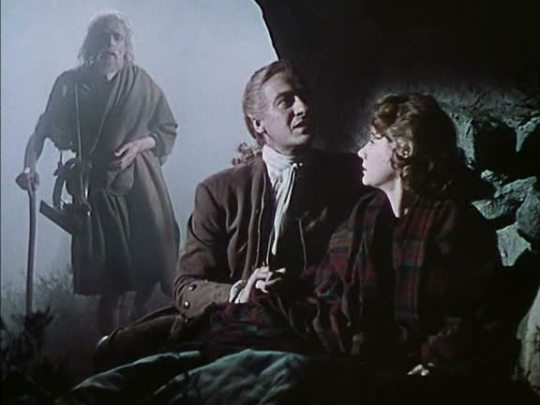
Bonnie Prince Charlie (1948)
In 1743, James Francis Edward, Prince of Wales, son of deposed King James II of England and Ireland and VII of Scotland decides he is too old to return to England to reclaim the English, Scottish and Irish crowns. Living in exile in continental Europe, he summons his son Prince Charles Edward Stuart to name him Prince Regent and entrust him with the task of reclaiming the crowns from the sitting monarch, King George II. During the succession debacle, the House of Stuart received the support of their Catholic subjects, while King George II of the House of Hanover had the support of the Protestants. Catholic France supported the House of Stuart's claim to the English, Scottish and Irish thrones. In 1745, Prince Charles Edward Stuart, affectionately known as Bonnie Prince Charlie and The Young Pretender, is finally sent to Scotland with French support to reclaim the throne from George II for the House of Stuart. With a warship and seven companions, Prince Charlie lands on a Scottish shore in great secrecy. His first task is to send word out and rally all the nobles and chieftains of all the Scottish clans. If he means to defeat the English in battle he must rally all of the Scottish clans to his cause. King George II of England gets wind of these activities, from his spies, but for the moment he is not worried. Bonnie Prince Charlie persuades all Scottish nobles and chieftains, except one, to join him in a rebellion against the English. The only dissenting Scottish nobleman argues that, without any significant French military support, the rebellion will fail. Undeterred, Bonnie Prince Charlie raises his royal standard on the 19th of August 1745 and claims the crowns of England, Scotland and Ireland in front of a gathering of Scottish nobles and chieftains. The Jacobite Rebellion has begun!~IMDB~
#Bonnie Prince Charlie#1948#film#cinema#David Niven#Margaret Leighton#John Laurie#Blind Jamie#Flora MacDonald#biography#drama#history#Scotland#1743#2nd Jacobite rising#1745#escape#Island of Skye#just watched
2 notes
·
View notes
Text
The 1975? No, I'm a fan of the 1745.
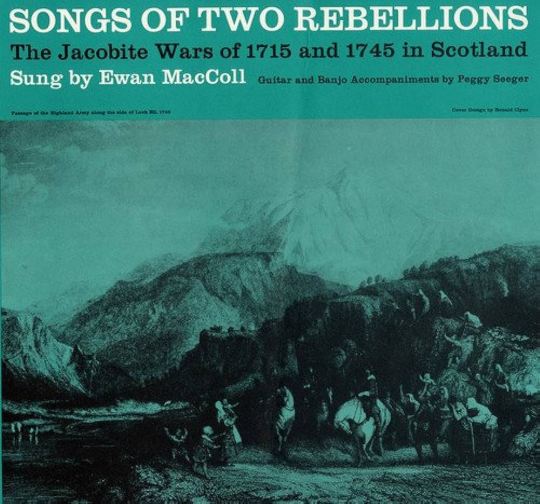

#remember when i took that class and became obsessed with the 1745 jacobite rising?#that was an embarrassing phase that's totally over#i'm not reading jacqueline riding at all#personal#like what do i even tag this#1745#jacobites#???
1 note
·
View note
Text

Glenfinnan Monument rises amidst the beauty of Loch Shiel, a timeless tribute to those who stood with Bonnie Prince Charlie in 1745.
This historic landmark offers views as inspiring as its story, where Scotland’s landscapes and past merge in a breathtaking panorama.
#scotland#scottish#travel#scenery#landscape#travel inspiration#landscape photography#scottish highlands#places to visit#glenfinnan#glenfinnan monument#autumn
208 notes
·
View notes
Text
#What I've learned from this list is that a lot of my favorite periods in history have to do with nations or kingdoms in flux#Many of these eras sit on precipices that change the course of history#such as The Rise and Fall of Jacobitism or the 2000s#How different would the world have looked if 9/11 hadn't happened?#Or if Christianity hadn't infiltrated Ireland and caused the near extinction of an entire culture?#There is so much about history we will never know#but these periods in time when the scales could have tipped one way over the other#and subsequently changed the course of our existences#are so fascinating to me#Which also tells me that if I'd been born 30/40 years from now#this moment in history that we're currently living in probably would have been one of my favorite periods in history; this Trump era#era and the question of whether we leave it behind or continue to spiral deeper into it...#Interesting stuff!#jack.txt#jack's polls
161 notes
·
View notes
Text

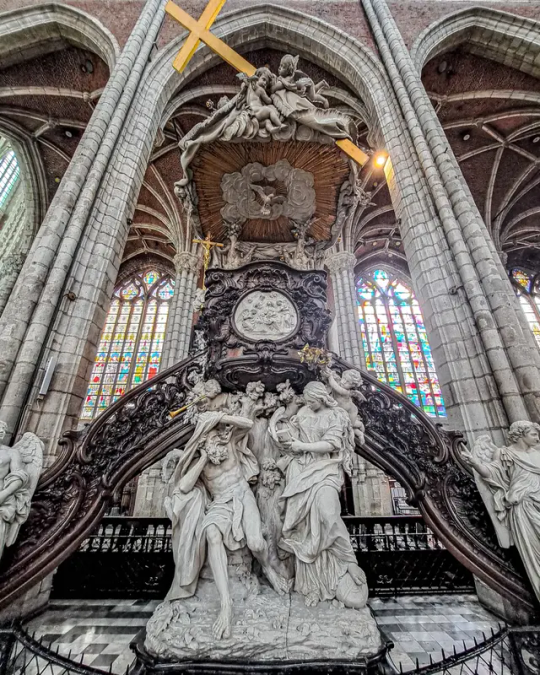
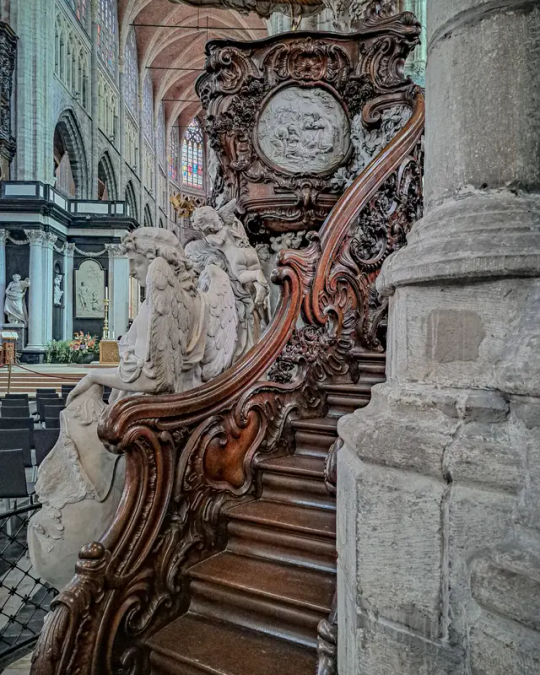
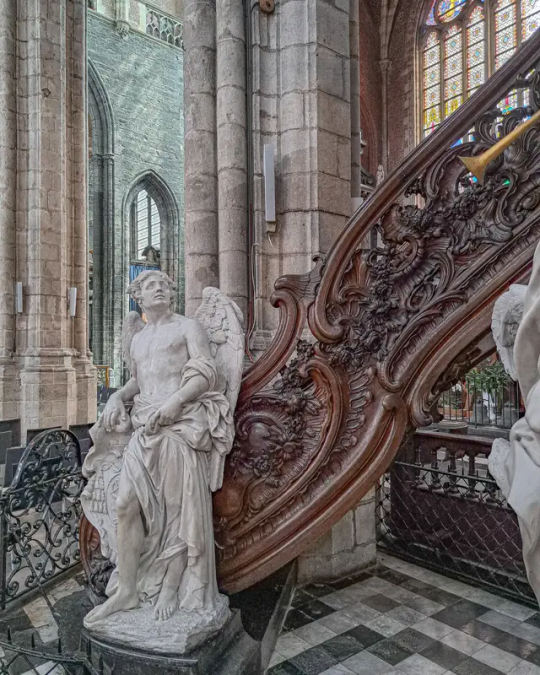






The pulpit at the Saint- Bavon's Cathedral (Sint-Baafskathedraal) in Ghent, Belgium.
Rococo pulpit made by Laurent Delvaux in 1741. The statues represent the blessing of the truth over error. Made of (white and black) Carrara marble and Danish oak, with gilded wood and wrought iron fence, made by J. Arens. The pulpit could be realized with money from Bishop Triest's fund. Laurent was commissioned by the Chapter of Sint-Baafs. The contract between both parties was signed on March 6, 1741.
As early as 1719-1720, the cathedral's clergy had a plan to replace the old pulpit, previously donated by Viglius Aytta, with a new work of art. In 1738-1739 and later, Van der Brugghen from Antwerp, Theodoor Verhaeghen from Mechelen and Laurent Delvaux from Nivelles made a design for a new pulpit. The latter's model was accepted for execution by the Ghent chapter, which concluded a written agreement with the sculptor on March 6, 1741. It precisely described which materials should be used, namely Danish oak and white Italian marble, and what the artwork should look like. In 1745 Delvaux had completed his work.
That pulpit, rightly regarded as a very representative piece of rococo church furniture in Flanders, has been elaborated on a rather large scale. The viewer's gaze is immediately drawn to the allegorical marble sculpture group under the tub, depicting Truth and Time. The Truth, in the form of a beautiful young woman in a graceful pose, holds a bulky, open book in her hands. Her beautifully arranged robe, which the artist managed to portray in a striking way, captures the movement of her long flowing hair. The globe under her right foot means that truth is higher and worthier than all other goods. The sun, shining on her breast, wants to show that Truth is a friend of light and that she looks up to God, without whose light there is no truth. The woman is crowned with a laurel wreath, the sign of victory. The book in her hands contains the following sentence from a speech by Paul to the inhabitants of Ephesus: 'Awake, you sleeper; rise from the dead, and Christ will give you light” (V, 14).
With her graceful body, slightly turned towards him, Truth turns towards a winged man, who foretells Time. He is winged because the proverb says: time flies. The old man sits on some blocks of stone and leans against a tree that supports the pulpit. He is awakened from his sleep by a putto blowing a trumpet, and lifts the veil that hid the Truth from him. People noticed his expressive head with striking play of light and shadow in the spirit of the late Baroque. For centuries, humanity was ignorant of Christ's message of salvation. She didn't see the Truth. Now Time throws off the veil that hindered his 'insight'. Instructed by the Truth, he is inspired by the divine Word, which is symbolized by the putto with the trumpet.
The entire group, inspired by an unfinished work by the Italian sculptor Bernini, is very balanced. The successful contrast between the youthful and lovely woman and the muscular old man, their posture and their draping testify to the artist's talent.
The branches of the tree swing smoothly around the pulpit, which is decorated with numerous rococo motifs and four medallions in relief. Three of these are explicative representations of the victory of Truth over Time and are therefore closely related to the group of images at the bottom. At the front we get the birth of Christ surrounded by angels and cherubim. This represents the Light among people. On the right the conversion of Paul is depicted, who was struck blind on the way to Damascus.
On the left is the conversion of St. Bavo. His eyes opened and he saw. After all, he was moved by the preaching of Saint Amandus and withdrew into a hollow tree in prayer. The last medallion on the back features the bust of Bishop Antoon Triest. The draped sounding board with a dove in a halo at the bottom is supported by two apple trees. On the sounding board, two angels hold a large cross, whose sleek surfaces contrast sharply with the playful branches of the tree. A third angel takes the apple from the mouth of a serpent that is writhing in the tree. At the entrance to each staircase there is a life-size angel on the inside with the coat of arms of Bishop Triest, thanks to whose fund it was possible to have this sculpture executed. The banister with its graceful curves and its lush and playful shells on the parapet is a beautiful piece of rococo in itself. The entire pulpit should not necessarily be viewed from any one point. It is conceived as an image that can be admired from all sides, without the composition losing value. (Source: Erik Duverger)
#gent#ghent#ghent belgium#flanders#vlaanderen#belgium#church#art history#sculpture#pulpit#artwork#sculptor#rococco#rococo#religion#catholic#cathedral
136 notes
·
View notes
Note
you’re attacking that neopagan kind of birthstone post about druid plants, but could you please elaborate or at least clarify the explicit trope that is being used that has been historically weaponized?
I used to spend about a good third of my time on this godforsaken website attacking that idea, but sure, I'll do it again. This will be a bit of an effortpost, so I'll stick it under the readmore
There is a notion of 'celts' or Gaels as being magicial and somehow deeply in touch with nature and connected to pre-Christian worldviews that the people who decided to make up the "Celtic tree astrology" used. This is also why Buffy used Irish Gaelic as the language of the demons, why Warhammer uses Gaelic as Elvish, why garbled Scottish Gaelic is used by Wiccans as the basis for their new religious construct, why people call themselves Druids to go an say chants in bad Welsh in Stonehenge, or Tursachan Chalanais, or wherever, etc etc. This stuff is everywhere in popular culture today, by far the dominant view of Celtic language speaking peoples. Made up neopagan nonsense is the only thing you find if you go looking for Gaelic folklore, unless you know where to look, and so on and so on. I could multiply examples Endless, and in fact have throughout the lifespan of this blog, and probably will continue to.
To make a long history extremely brief (you can ask me for sources on specifics, or ask me to expand if you're interested), this is directly rooted in a mediaeval legalistic discussion in Catholic justifications for the expansionist policies of the Normans, especially in Ireland, who against the vigourous protestation of the Church in Ireland claimed that the Gaelic Irish were practically Pagan in practice and that conquest against fellow Christians was justified to bring them in like with the Church. That this was nonsense I hope I don't need to state. Similar discourses about the Gaels in Scotland exist at the same time, as is clear from the earliest sources we have postdating the Gaelic kingdom of Alba becoming Scotland discussing the 'coastal Scots' - who speak Ynglis (early Scots) and are civilised - and the 'forest Scots' (who speak 'Scottis' (Middle Gaelic) and have all the hallmarks of barbarity. This discourse of Gaelic savagery remains in place fairly unchanged as the Scottish and then British crowns try various methods for integrating Gaeldom under the developing early state, provoking constant conflict and unrest, support certain clans and chiefs against others and generally massively upset and destabilise life among the Gaels both in Scotland and Ireland. This campaign, which is material in root but has a superstructure of Gaelic savagery and threat justifying it develops through attempts at assimilation, more or less failed colonial schemes in Leòdhas and Ìle, the splitting of the Gaelic Irish from the Gaelic Scots through legal means and the genocide of the Irish Gaels in Ulster, eventually culminates in the total ban on Gaelic culture, ethnic cleansing and permanent military occupation of large swathes of Northern Scotland, and the destruction of the clan system and therefore of Gaelic independence from the Scottish and British state, following the last rising in 1745-6.
What's relevant here is that the attitude of Gaelic barbarity, standing lower on the civilisational ladder than the Anglo Saxons of the Lowlands and of England, was continuously present as a justification for all these things. This package included associations with the natural world, with paganisms, with emotion, and etc. This set of things then become picked up on by the developing antiquarian movement and early national romantics of the 18th century, when the Gaels stop being a serious military threat to the comfortable lives of the Anglo nobility and developing bourgeoise who ran the state following the ethnic cleansing after Culloden and permanent occupation of the Highlands (again, ongoing to this day). They could then, as happened with other colonised peoples, be picked up on and romanticised instead, made into a noble savage, these perceived traits which before had made them undesirable now making them a sad but romantic relic of an inexorably disappearing past. It is no surprise that Sir Walter Scott (a curse upon him and all his kin) could make Gaels the romantic leads of his pseudohistorical epics at the exact same time that Gaels were being driven from their traditional lands in their millions and lost all traditional land rights. These moves are related. This tradition is what's picked up on by Gardner when he decides to use mangled versions of Gaelic Catholic practice (primarily) as collected by the Gaelic folklorist Alasdair MacIlleMhìcheil as the coating for Wicca, the most influential neo-pagan "religion" to claim a 'Celtic' root and the base of a lot of oncoming nonsense like that Celtic Tree Astrology horseshit that started this whole thing, and give it a pagan coat of paint while also adding some half-understood Dharmic concepts (three-fold law anyone?) and a spice of deeply racist Western Esotericism to the mix. That's why shit like that is directly harmful, not just historically but in the present total blotting out of actually existing culture of Celtic language speakers and their extremely precarious communities today.
If you want to read more, I especially recommend Dr. Silke Stroh's work Gaelic Scotland in the Colonial Imaginary, Dr. Aonghas MacCoinnich's book Plantation and Civility in the North-Atlantic World, the edited collection Mio-rún Mór nan Gall on Lowland-Highland divide, the Gaelic writer known in English as Ian Crichton Smith's essay A real people in a real place on these impacts on Gaelic speaking communities in the 20th century, Dr. Donnchadh Sneddons essay on Gaelic racial ideas present in Howard and Lovecrafts writings, and Dr. James Hunter's The Making of the Crofting Community for a focus on the clearings of Gaels after the land thefts of the late 18th and early 19th century.
@grimdr an do chaill mi dad cudromach, an canadh tu?
242 notes
·
View notes
Text

21st September 1745 saw The Battle of Prestonpans.
The Battle of Prestonpans was the first significant conflict in the Jacobite Rising commonly known as the ‘45.
The subject of my earlier post, Walter Scott made the Battle of Prestonpans the centrepiece of his first novel Waverley, and another Edinburgh literary giant, Robert Louis Stevenson looks back on its importance in Kidnapped. The national bard Robert Burns also wrote about it and has connections with the area, his brother worked in Prestonpans and he is remembered around the town to this day.
The battle later reached the big screen with David Niven’s Bonnie Prince Charlie in 1948, and more recently Diana Gabaldon’s Outlander novels and TV series have brought the Battle of Prestonpans to audiences all around the world.
The victory became a symbol of Scottish resistance to British government rule, and of the negligence of Hanoverian military commanders.
Thanks to local knowledge and a thick haar that drifted in from the Firth of Forth, the Jacobite army filed along a narrow path during the wee small hours giving them the element of surprise over the redcoat army and General “Johnny Cope”
At 6am around 2,000 men drawn to the cause of Prince Charles Edward Stuart clashed with a larger force of some 3,000 government troops under the command of Sir John Cope close to the Firth of Forth in East Lothian.
Cope’s men, originally facing South, were forced to rapidly wheel around to face the Jacobites, who charged unexpectedly from the East.
British dragoon regiments, stationed on either flank of Cope’s infantry, abandoned their posts soon after fighting began, leaving the foot soldiers dangerously exposed.
Surrounded on three sides, the remaining Hanoverian force was swept aside in a little over ten minutes.
Hundreds of government troops were killed or wounded, and a further 1,500 taken prisoner by the Prince’s men, Jacobite casualties were light.
But while the rout took just a few minutes, Jacobite commanders had been far less confident about victory in the days leading up to it. There had been a few skirmishes, including at High Bridge in Lochaber in August, but this was the first large-scale confrontation with a sizeable Hanoverian force.
The Hanoverians were professional soldiers, infantry and dragoons, the forces at Cope's disposal were - or should have been - competent.
In contrast, contemporary accounts emphasise the role of poor Highlanders, who marched south with Prince Charles, in the Jacobite force. If the Jacobites had lost it would have been game over, especially since there was much dissension among the senior Jacobite commanders in the hours before the battle.
Several accounts of the battle emphasise how spooked Cope’s men were by the Highlanders, as well as their struggle to deploy heavy cannon and cavalry that should have given them an advantage. Cope is said to have been so frustrated by his artillery units that he dismissed them and sent word to Edinburgh for replacements. They did not arrive in time.
Despite being cleared of any negligence at a court martial in 1746, Sir John Cope’s reputation as a military commander was destroyed by Prestonpans, and never recovered.
Immortalised in Adam Skirving’s famous Scots song “Hey, Johnnie Cope, Are Ye Waking Yet?, Cope was characterised in contemporary accounts as a coward and a buffoon.
Fye now Johnnie, get up and run,
The Highland bagpipes mak a din,
It's better tae sleep in a hale skin.
For 'twill be a bloody morning.
When Johnnie Cope tae Dunbar came,
They spiered at him, 'where's a' your men?'
'The Deil confound me gin I ken,
For I left them a this morning.'
Skirving's song did much of the damage, but Burns also published a version and there wasn't much of a counter-narrative in his favour.
The site of Cope’s defeat - and the Jacobite’s surprise victory - has been listed in the Scottish Government’s national inventory of significant battle sites when that was established in 2009, and re-enactments of the fighting regularly take place.
A cairn in memory of the battle was erected in 1953 and others have been added throughout the years. A visitor centre is planned.
The illustration is from the hand of the late Andrew Hillhouse depicting the night march. https://www.andrewhillhouseprints.co.uk/gallery_660173.html
49 notes
·
View notes
Text

The recreated 1746-era 13th Foot at Tamworth Castle.
77 notes
·
View notes
Photo

George Washington in the French and Indian War
The life and career of George Washington (1732-1799) were largely impacted by the French and Indian War (1754-1763). An officer of the Virginia Regiment, Washington's actions at the Battle of Fort Necessity and the Braddock Expedition helped escalate hostilities between Britain and France. His exploits in the war would help lead to his appointment as commander-in-chief of the Continental Army.
Colonel George Washington in the Uniform of the Virginia Regiment
Charles Willson Peale (Public Domain)
Background
In the early 1750s, tensions between the colonial empires of Great Britain and France were once again on the rise. The Ohio River Valley, though under the nominal control of the Six Nations of the Iroquois Confederacy, had been claimed by both empires; indeed, British and French traders had long been operating in the region, trying to establish commercial relations with local Native Americans. The British colony of Virginia, whose colonial charter asserted that its western border stretched all the way to the Pacific Ocean, was particularly interested in the Ohio Country. Virginia's economy was heavily reliant on the production of tobacco, which tended to exhaust the soil; to maintain economic growth Virginia had to acquire new, fertile lands for farming, of which the Ohio Country had in abundance. As early as 1745, Virginia's House of Burgesses began issuing land grants in the Ohio Country to land speculation companies, including the Ohio Company, which represented the financial interests of prominent Virginian investors. This unnerved the French, who wanted control of the Ohio Country both to deny the westward expansion of the British colonies and to maintain a connection between their own colonies of New France (Canada) and Louisiana.
In response to Virginia's encroachments into the territory, the French constructed three forts at the forks of the Ohio River. To Lieutenant Governor Robert Dinwiddie of Virginia, this was an unacceptable provocation; Dinwiddie was an investor in the Ohio Company, giving him a personal as well as a political incentive to want the French out of the Ohio territory as soon as possible. In 1753, he decided to send an envoy to demand that the French remove themselves from the Ohio. The man Dinwiddie decided to send for this crucial diplomatic mission may not have been the obvious choice – George Washington, a recently commissioned major in the Virginia militia, was only 21 years old, with little formal education and no knowledge of the French language. But what he lacked in experience, he made up for in ambition; Washington was hoping that a successful mission would advance his budding military career and earn him a commission in the regular army. Washington also had a connection to the Ohio Company – his recently deceased half-brother, Lawrence, was one of the first investors – which was likely another reason Dinwiddie chose him. On 1 November 1753, Washington left Virginia's capital of Williamsburg bearing a letter from the governor. It was a mission that would change his life and shape the history of North America.
Continue reading...
34 notes
·
View notes
Text
It was fun last year, as far as I know no-one has tried to have me burned for heresy, I could use a fun diversion right about now, and I haven't yet run out of ballads. So here is this year's:
Vaguely Whumptober-Themed Anthology of Folk Songs from the British Isles / Transatlantic Tradition: Part 1
(What’s a random American gal with no English/Scottish/Irish heritage doing listening mostly to songs like these? Blame my parents for raising me on murder ballads and ceilidh tunes.)
1) If only we could hold on: White Squall (X)
A Folk Revival (20th c) composition from closer to home.
I clung there to the stanchions and I felt my face go pale As he crawled hand over hand along the rail I could feel her keeling over with the fury of the blow I watched the rail go under then, so terrible and slow Then like some great dog she shook herself and roared upright again Far overside, I heard him call my name
2) You got away with the crime while the knife's in my back: Dowie Dens of Yarrow (X X)
An old traditional ballad.
A humble ploughman braves mortal combat with nine high-born rivals for the hand of the lady he loves. He wins, only for her brother to stab him in the back. Literally
3) Wrongfully Arrested: Long Black Veil (X) / Over the Hills (X)
An American country ballad and a Celtic rock/metal ballad (covered on hurdy-gurdy!!) which share enough similarities to have come from the same centuries-old traditional ballad. They are both actually original compositions, but the genres owe much to the old tradition.
Ten years ago, on a cold, dark night Someone was killed 'neath the town hall light There were few at the scene, but they all agreed That the slayer who ran looked a lot like me
4) Hallucinations (visions): MacCrimmon's Lament (X)
A haunting tune from the 1745 Jacobite Rising. Stretching the prompt a bit, but for a good cause ;)
A lament for the death of the piper Donald Bán MacCrimmon, sole casualty of the Rout of Moy. It is said that the tune was composed by Donald Bán himself following a premonition of his own death. Lyrics were written later, in Gaelic, Scots, and English.
5) Healing Salve: Witch of the West-Mer-Land (X X)
A Folk Revival (20th c) composition with much the feel of an old trad ballad.
A mortally wounded knight seeks the aid of an enchantress, who tends his wounds with a combination of herbs and magic, saving his life.
6) It's not (my) blood: The Douglas Tragedy (X)
An old traditional ballad.
He lichted doon tae tak’ a drink o’ the water that ran sae clear An’ doon the stream ran his hairt’s blood, and sair she began tae fear 'Rise up, rise up, Lord William,' she said, 'for I fear ye are slain' '’Tis naethin’ but the shadow of my scarlet coat that shines in the water sae plain'
This is the type of family strife / star-crossed lovers ballad that ends badly for all involved. And I do mean all.
7) It's us or them: Henry Martin (X)
An old traditional ballad.
A desperate young man's first attempt at piracy does not go as hoped, when his quarry refuses to surrender. After hours of fighting, he ultimately sinks his would-be prize outright -- perhaps as the only way to save his own ship and crew.
8) Forced to Stay Awake: Captain Coulston (X)
A broadside (19th c) emigrant ballad.
He said my boys do not go down, you need not think on sleep For in a few hours more we shall be slumbering in the deep For a pirate ship is coming down upon the western sea To rob us of our property going to Amerikay
9) Obsession | Frame me up on the wall, just to keep me out of trouble: Lily of the West (X X)
A broadside (19th c) murder ballad with versions on both sides of the Atlantic.
An unreasonably jealous young man with a deadly weapon and a remarkable inability to take responsibility for his own actions. What could possibly go wrong.
10) Blow to the head: Follow Me Up To Carlow (X)
An Irish rebel song. I would be remiss if I didn't include at least one.
White is sick and Grey has fled, now for black Fitz William's head We'll send it over dripping red to Lizzy and her ladies
11) Loneliness | No trace: Lament of the Fisherman's Wife (X)
A Folk Revival (20th c) composition, but a tale as old as time.
Now she has come down to condemn that wild ocean For the murderous loss of her man His boat sailed out on Wednesday morning And it's feared she's gone down with all hands
12) Starvation: The New York Trader (X)
A broadside (19th c) - or possibly older traditional - emigrant ballad.
Our cruel captain as we did find Left half of our provisions behind Our cruel captain, you'll understand Meant to starve us all before we reached the land
13) Multiple whumpees | "Death will do us part": Lord Thomas and Fair Elender (X X)
An old traditional ballad found on both sides of the Atlantic.
At his parents' urging, a young man marries for wealth rather than love. (Or the conventional racist beauty standards of the time -- elements of this tale are very dated.) The wedding ends in a murder and a murder-suicide.
14) Hunting Gear: Van Dieman's Land (X)
A transportation ballad. Gotta have one of those too.
Come all you gallant poachers that ramble void of care That walk out on a moonlight night with your dog, your gun and snare The harmless hare and pheasant you have at your command Not thinking of your last career out on Van Diemen’s Land
15) Painful Hug: Young Hunting (X) / Love Henry (X)
An old traditional ballad with versions on both sides of the Atlantic.
Another jealous murder, with a twist.
He bent down o’er his saddle bow To kiss her ruby cheek, But she took out a little pen-knife And wounded him full deep
13 notes
·
View notes
Text
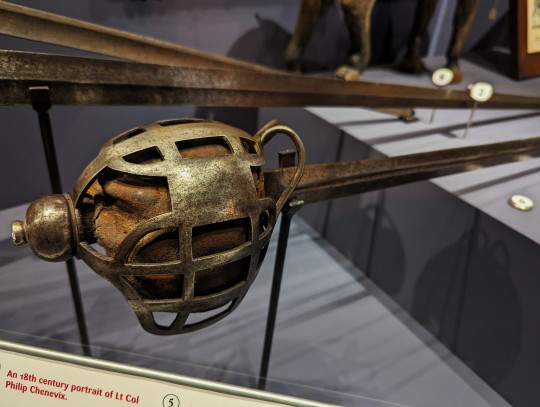
Basket-Hilted Cavalry Sword from the British Empire dated to the Mid-18th Century on display at the Royal Scots Dragoon Guards Museum in Edinburgh Castle, Scotland
Swords of this type were purchased by the colonels of the British cavalry regiments for the use of their men. The styles of hilt varied from regiment to regiment. Basket-hilted swords became popular, not just with Scottish regiments but many cavalry regiments around Europe.
The 2nd Royal North British Dragoons were part of the War of Austrian Succession (1740 - 1748) as part of the coalition forces. They fought at the battle of Dettingen in 1743 where King George II became the last British monarch to fight in a battle. In 1745 the last Jacobite Rising took place and unlike in the last risings the regiment were left in Flanders.
Photographs taken by myself 2023
#sword#british empire#cavalry#scotland#scottish#military history#18th century#georgian#hanoverian#royal scots dragoon guards museum#edinburgh castle#barbucomedie
47 notes
·
View notes
Text
@epersonae :D

Infodumping time! :D :D :D :D
Okay, so it has been acknowledged on all fronts that OFMD does really well at dealing with a world steeped in colonialism, especially when it comes to Ed and his mum’s implicit backstory, Jim’s history and family background in St. Augustine, plus the various tidbits we get about Frenchie, Oluwande and Roach and the other one-episode characters like Abshir and the Arawak people.
Now let me explain why I also got so excited about the British characters we have in the show, entirely based in the context of colonialism and the British class system.
The show is set in 1717. By this point, Britain is the ‘united’ Kingdom with England having laid claim to Ireland and Wales for years and finally hooking Scotland with the Act of Union in 1707, after the disaster of the Darien Project - another story another day - utterly bankrupted Scotland.
In 1689, there was the Glorious Revolution, wherein William of Orange came over from the Netherlands (at the request of the mostly English aristocracy) and punted James II/VII (II of England, VII of Scotland) off the throne. Civil wars of various shapes and sizes happened for the next 40+ years, but especially in parts of Ireland and Scotland.
So let me tell you that when I realised this crew of pirates had both a Northern Irish and a working class Scots character in it? I screeched. Especially a Scots character using the Scots language, which never appears anywhere except Scots media? Not least because many, many pirates who were working in the Caribbean at that time were dispossessed Irish and Scotsmen, especially following the most recent Jacobite rising in 1715. (Also, speculation abounds that historical Stede was actually a Jacobite sympathiser since he named his second ship Royal James, but that’s another story for another day)
I’m not as familiar with the Irish history, but I know that with the plantation of Ulster in the 17th century, Irish Catholic families were forcibly displaced to make room for Protestant families from Britain, who got all the valuable/usable land, while the Irish Catholic population were taxed to the hilt and driven to live on poorer land plus the horrors of the church schooling system, where the kids were taken from their families to be assimilated.
Sound familiar? Ireland is where Britain honed its colonisation blade to the point that in 1745, the Scots nobles were calling it “the Irish system” when they decided it would be a useful thing to use to subdue “the superstitious savages” in the Highlands to turn everyone into only-English-speaking protestant automatons (Again, Buttons speaking Scots had me screeching! It doesn’t happen! Not in American shows! And yet!!!). It was later rolled out across the British empire.
So yes. This has been happening for centuries and one of the regular solutions to deal with people who were protesting against children being taken/all their food being taxed away/any vague sound of dissent or rumblings of ‘Papishness’ was cause for Banishment. The Good Old British solution to any problem in the 16th-18th century: kick them out the country to one of the countries that we need filled with white folk or enslave them in a plantation.
It’s very telling that in British politics, the insults that the London-based politicians used for each other were to call each other Irish bandits (Tory is apparently an English bastardisation of the Irish word “tóraidhe”, which means outlaw) and Scottish cow herder (likewise Whig was mockingly derived from “Chuig an bothar”, the call of the cattle drivers)
So within a historical context, Buttons and Wee John ending up in the Caribbean wouldn’t have been unusual. It was very common to the point that there was an entire Jacobite/anti-England faction of pirates in Nassau (ie. the Republic of Pirates). There’s also a reason that a lot of plantations ended up being owned by Scottish ex-aristocracy - many were stripped of lands/titles because of the Jacobite risings and ended up in the Caribbean (And made their fortunes, then bribed their way back to their titles because of course they did. Bastards).
I do wish we’d got more information about Ivan and his background. At the time the show is set, Britain was tromping over and around south Asia with the East Indian Trading Company (also known as the Giant Company of Thieving Bastards Here To Steal Your Cool Stuff) which had been spreading its influence throughout the region since the 1600s and by the 1700s, were the main European power in the area. There are records showing connections between south Asia and St. Helena in the Caribbean from as early as 1684, so it isn’t impossible that someone from the area that is now Pakistan couldn’t have ended up working on trading ships to the Caribbean.
And then we have Lucius and Izzy, our two white English crew.
I have so many feelings about the class subtext that is slathered all over the show and I need to mention that before I move on to the boys.
Stede is technically upper class because of his wealth but when you see him with any of the other English characters who are upper class by birth and breeding, he is seen as secondary to them. The way Badminton and his officers treat Stede demonstrates this. If he was the firstborn son of someone with any title/lineage and had inherited said title, there would be some level of class-bias and respect shown because one has to follow the social code. However, the son of a man who bought his way into land and respectability? PFFT. No.
When his father says “Mary has acreage” and tells Stede “you didn’t earn it”, it speaks measures: Bonnet Senior is new money with no property or title and is still angry about “rich boys”. He’s rich himself, yes, but he wasn’t born to it. He didn’t inherit it and he begrudges the fact his son will have it handed to him. (Take Antoinette’s comment to Siegfried on the party ship - “just inherit it like a normal person” - this is how the gentry talk about wealth)
Also, re. Stede not having an English accent, while his father does - I like the implication that Stede is first-gen colony baby. His dad came out to make a fortune, which is why he still has his English accent, but Stede was only in England for school, which is why he doesn’t have the accent.
So yis, in that line, Stede is upper class by property, but not by breeding. He’s “not some derelict. He has money” and that’s all that he had going for him. When he talks about the party he describes it as “posh knobs hob-nobbing with other posh nobs” and later tells Frenchie he never really fit in at those kind of dos. His father may be a land-owner, but that’s only a few steps above “tradesman” to the born-and-raised aristocracy.
Then we have Lucius. He’s absolutely not working class. At a guess, I’d say some kind of merchant level because his family would have had to be financially sound enough to afford to give him an education that involved calligraphy and have a reason for him to be able to read and write exceptionally well. One of the options is that he was trained up to be a clerk, someone who does all the writing and book-keeping.
And then we have Izzy. I can’t avoid the fact that Izzy’s social context is important because Con is famous in his field for playing working class northern characters. He’s won awards for it.
Before I start munching on this particular chew toy, a quick recap: for people unfamiliar with the British Isles, there is a big social divide between the north and south of England. North England was where so much of the big industry happened back in the day (mines, shipyards, factories, mills et al), while London and the south were seen as the political hubs.
When said industries went under, let’s just say it was the north that dealt with the brunt of it and are still dealing with the repercussions of decisions made by the governments in the south. (Yes, this is a quick and very generalised recap, but it’s 9am on a Sunday morning and I have no brain for getting into the collapse of the industrial revolution + the successive mess of stuff that followed)
So Izzy. Izzy is one of Con’s juicy working class northern lad creations. He’s not got much in life but he’s clawed his way into a position that should merit some respect and some appreciation. He has worked hard to get where he is and is determined to maintain what he has got.
And if we are to take his accent as we take Buttons and Wee John, he’s from Liverpool, which was becoming one of the biggest ports in England at the time on the north west coast of England. Because it expanded so rapidly from the late 1690s, the majority of people in the Liverpool area were probably working in/around/associated with the port.
My dad’s side of the family are northern (north-east, though) and working class and one thing I can very clearly remember about the older generations was that they thought hard work was the way to go because that was how things had always been done: you work hard, you get what you earn and you get on with it. Education was a luxury most people couldn’t afford because you had to work, because if you didn’t work, you didn’t eat. (I could also go on and on about how certain generations there thought reading made you “soft” but that’s a whole other kettle of fish)
Izzy really embodies that ethos, especially when he’s faced with a crew who don’t seem to even be doing the bare minimum of work. His hostility is understandable when he has been working his arse off and, in his own words, “barely ekeing by” while these people are acting like they’re on a holiday cruise. His comment on the library - the “perverse misuse of space” about something only rich people had access to - and pushing Lucius into doing some physical labour when Lucius is the equivalent of a secretary is Izzy expressing his frustrations with it all. This life is the one he knows and he knows how it’s meant to work but Stede has come along, saying “what if it wasn’t like that?” and Izzy isn’t a fan.
I know I’m probably reading a lot more into it than there really is there, but given how much David Jenkins has spoken about Con’s audition performance and development of the character shaping the scripts, I can’t help feel that it’s important, especially given how deftly they handled so many of the other aspects.
101 notes
·
View notes